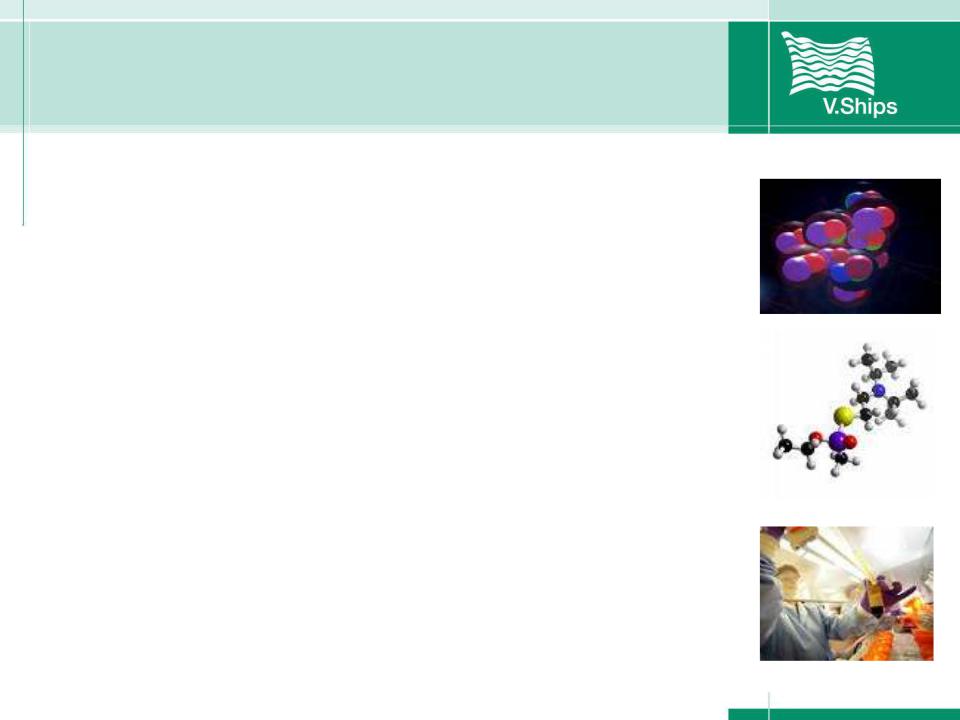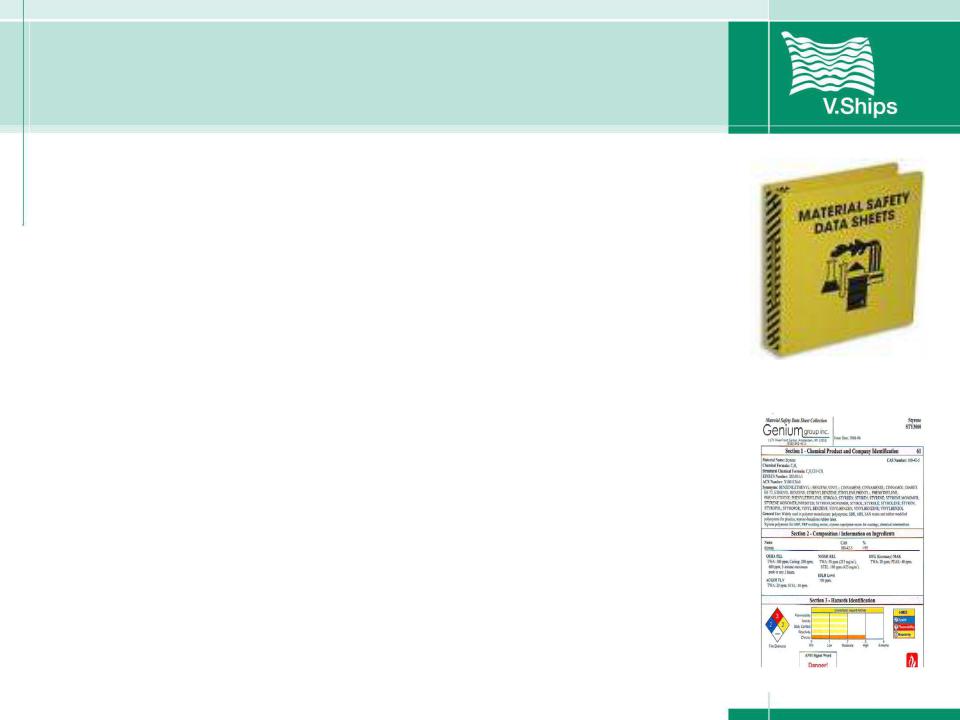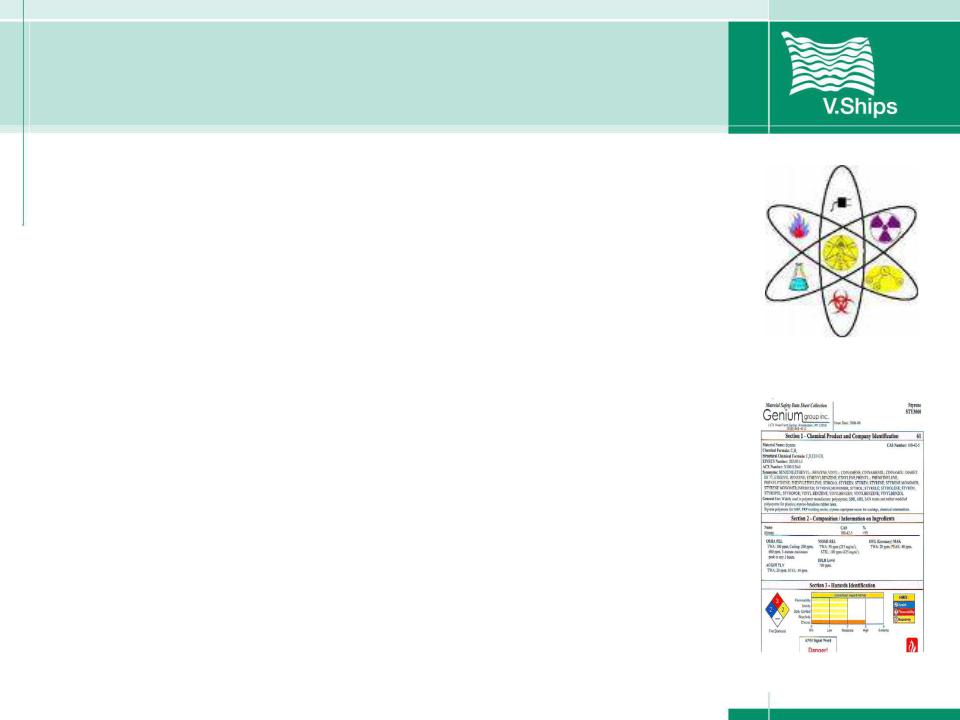
Chemical Tankers / Day 1 / Day 1 Topic 3 Chemical Family
.pdf
Acids and acidity
pH is a measure of the acidity or basicity of a solution. It is defined as the cologarithm of the activity of dissolved hydrogen ions (H+). Hydrogen ion activity coefficients cannot be measured experimentally, so they are based on theoretical calculations. The pH scale is not an absolute scale; it is relative to a set of standard solutions whose pH is established by international agreement.

Grouping of cargoes according to USCG Chemical Data Guide
The cargo groups in the USCG Chemical Data Guide compatibility chart are separated into two categories: 1 through 22 are “Reactive Groups” and 30 through 43 are “Cargo Groups”.
Task: Familiarise with USCG Chemical Data Guide

Grouping of cargoes according to USCG Chemical Data Guide
Hazardous reaction — mixture of two cargoes is considered hazardous when, under specified condition, the temperature rise of the mixture exceeds 25 °C or a gas is evolved. It is possible for the reaction of two cargoes to produce a product that is significantly more flammable or toxic than the original cargoes even though the reaction is non-hazardous from temperature or pressure considerations, although no examples of such a reaction are known at this time.

MSDS
What is a MSDS?
Discuss its importance & contents

General information about MSDS
What is a MSDS?
A material safety data sheet (MSDS) is a form containing data regarding the properties of a particular substance. An important component of product stewardship and workplace safety, it is intended to provide workers and emergency personnel with procedures for handling or working with that substance in a safe manner, and includes information such as physical data (melting point, boiling point, flash point, etc.), toxicity, health effects, first aid, reactivity, storage, disposal, protective equipment, and spill handling procedures

General information about MSDS
MSDS (material safety data sheets) are a widely used system for cataloging information on chemicals, chemical compounds, and chemical mixtures. MSDS information may include instructions for the safe use and potential hazards associated with a particular material or product. MSDS can be found anywhere chemicals are being used.

General information about MSDS
Extract from VMS Chemical 3.3.2
MSDS are very important and useful sources of information relating to the chemical compound being
shipped. A MSDS should be supplied by the manufacturer, supplier or shipper for each type of cargo before being loaded. If these are unavailable then the office must be advised for further instruction before loading the cargo and a Letter of protest issued.

MSDS data explanation
The data sheets comprise of different sections and the layout may differ slightly from supplier to supplier however the information contained within them is basically the same and can be summarised as follows:
• Identification of Substance. This will include the trade name and manufacturer.
• Composition and Formula.
• Principal Hazards (e.g. toxic, carcinogenic etc)
• First Aid Measures
• Fire-fighting Measures
• Accidental Release Measures

MSDS data explanation
• Handling and Storage
• Exposure Controls and Personal Protection (this will include the likes of threshold limit values
and details of PPE)
• Physical & Chemical Properties
• Stability & Reactivity
• Toxicological Information
• Ecological Information
• Disposal Considerations
• Transport Information (e.g. UN numbers)
• Further Information

MSDS contents
Product Identification
This section gives the name and address of the manufacturer and an emergency phone number where questions about toxicity and chemical hazards can be directed.
